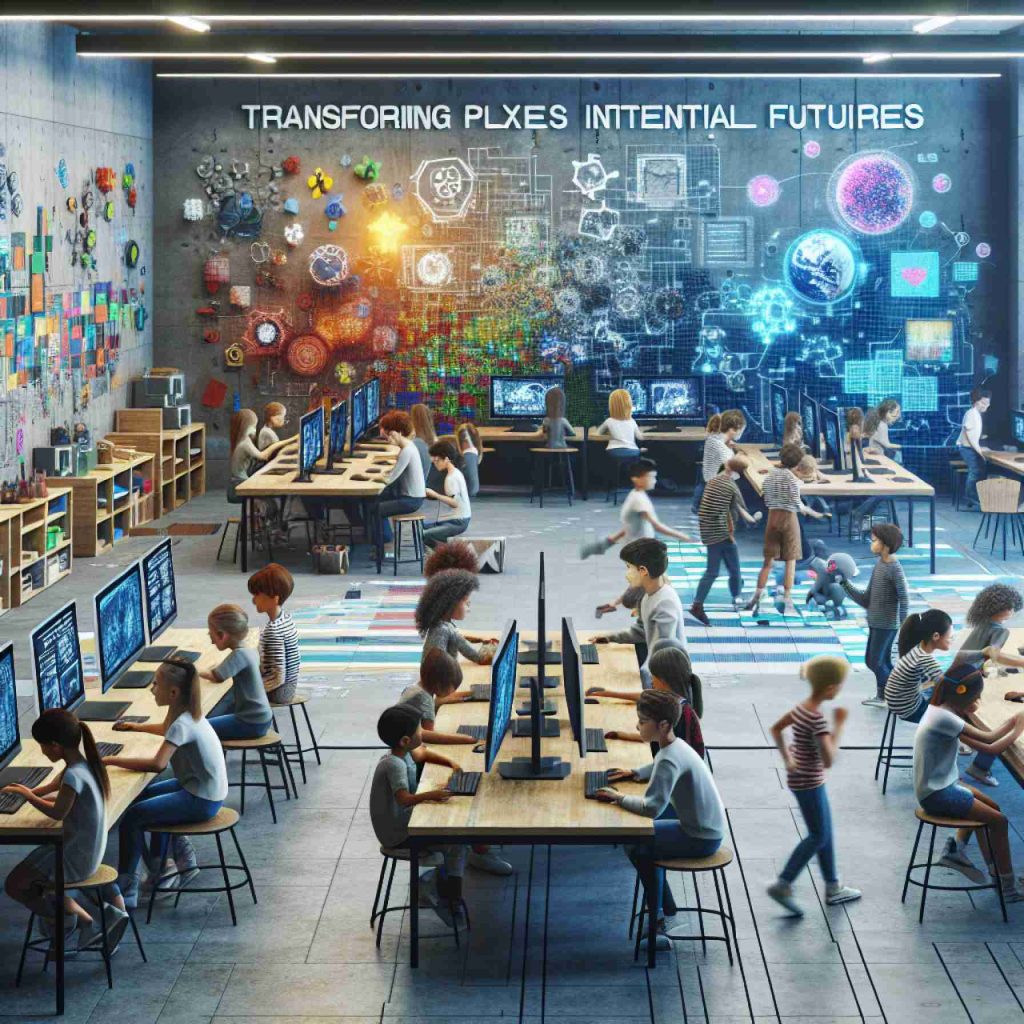
- Marginal Entropy is a nonprofit founded by Jocelynn Hartwig in Fort Wayne to provide STEM education for marginalized youth.
- Hartwig’s initiative opens doors for children lacking access to coding education, focusing on those whose parents may not be tech-savvy or attend schools without coding programs.
- Utilizing Minecraft Education Edition, students learn coding through engaging methods, progressing from block code to JavaScript and Python.
- The program promotes modern literacy, emphasizing coding as a vital skill similar to email mastery in previous decades.
- Marginal Entropy offers a personalized learning environment with a 2-to-1 or 3-to-1 student-teacher ratio.
- Success is defined by the breadth of inclusion and nurturing future tech innovators, not just quantitative metrics.
- Over two “seasons,” around 20 students have participated, with more expected as the program grows.
A small, unassuming classroom in Fort Wayne hums with energy on a weeknight. Children are gathered around glowing computer screens, their eyes filled with excitement and determination. But they aren’t transfixed by some video game. Instead, they’re learning to control these virtual worlds through the power of code. Guiding them is Jocelynn Hartwig, a force of passion and purpose, carving paths into the tech world for youngsters who might otherwise be left lagging behind.
Hartwig, a stalwart of Fort Wayne and a luminary at Microsoft, birthed Marginal Entropy, a nonprofit breaking down barriers to STEM education for marginalized youth. Sparked by a desire to “pay it forward,” this initiative transforms technology into a tangible opportunity. With a focus on children whose parents might not be tech-savvy or whose schools lack coding programs, this endeavor spreads its welcoming wings to those in need of direction.
Realizing the stumbling blocks in her own journey—one that didn’t intersect with the world of computer science until post-college—Hartwig now channels experience into mentorship. She works alongside the relentless evolution of AI at Microsoft, underscoring a critical point: coding is not just a career path but a vital skill. Much like mastering email once was, understanding code is fast becoming an essential part of modern literacy.
It’s through the beloved blocky world of Minecraft Education Edition that Hartwig strikes a chord with her students. Here, they lay down virtual bricks of logic, piecing together block code before graduating to the intricacies of JavaScript and Python. The magic lies in the engagement—where learning entwines with play, and control codes characters while nurturing minds.
Marginal Entropy is more than a program; it’s a community where a 2-to-1 or 3-to-1 student-teacher ratio ensures personalized attention. Over its journey through two “seasons,” nearly 20 students have unlocked new potentials, with more awaiting as the next session approaches.
Hartwig measures success not by numbers but by the breadth of inclusion. The classroom’s quiet revolution nurtures confidence, builds skills, and increasingly, it adds to the diverse tapestry of future tech innovators. In Fort Wayne, children are transforming pixels into stepping stones for vibrant futures, one code at a time.
Uncovering the Tech Revolution: Empowering Youth Through Coding Education
Introduction
In a small classroom in Fort Wayne, a remarkable shift is taking place. Under the guidance of Jocelynn Hartwig, these children are not just playing with computer screens—they are carving paths toward a future in technology. Hartwig’s initiative, Marginal Entropy, is breaking down barriers to STEM education, fostering a new generation of tech innovators from marginalized backgrounds.
The Essence of Marginal Entropy
Marginal Entropy stands at the intersection of education and opportunity, targeting young minds whose circumstances might otherwise limit their exposure to technology. With a focus on inclusion, the program offers a welcoming environment for children whose parents may lack tech expertise or whose schools do not offer robust coding curricula.
Core Values and Impact:
– Personalized Learning: Maintaining a 2-to-1 or 3-to-1 student-teacher ratio ensures each child receives the attention they need.
– Engagement Through Play: Leveraging tools like Minecraft Education Edition connects learning and play, making the experience both enjoyable and educational.
– Broad Skill Development: Students begin with block code, progressing to the complexities of languages like JavaScript and Python.
The Benefits of Early Coding Education
1. Enhances Problem-Solving Skills: Coding promotes logical thinking and problem-solving, essential skills for any career.
2. Opens Career Paths: With technology rapidly evolving, coding is becoming a necessary component of literacy, akin to reading and arithmetic.
3. Encourages Creativity: Contrary to traditional perceptions, coding is a highly creative endeavor, allowing children to build and innovate.
Real-World Use Cases and Success Stories
Children from Marginal Entropy have already begun applying their skills to real-world problems, creating simple apps and games that address issues relevant to their communities. These projects not only enhance their learning but also build their portfolios for future educational and career opportunities.
Industry Trends: The Growing Demand for Tech Skills
As technology becomes increasingly integrated into every aspect of life, the demand for tech-savvy professionals continues to rise. According to the Bureau of Labor Statistics, computer and information technology occupations are projected to grow by 11% from 2019 to 2029, much faster than the average for all occupations.
Actionable Recommendations for Parents and Educators
– Encourage Exploration: Support children in exploring technology and discovering coding through platforms like Code.org or Scratch.
– Foster a Growth Mindset: Reinforce the idea that learning to code is a journey, with each mistake being a learning opportunity.
– Seek Community Resources: Look for local programs like Marginal Entropy or join online coding communities to expand knowledge and networks.
Conclusion
Through initiatives like Marginal Entropy, the digital divide is narrowing, allowing more children to dream and achieve in the tech realm. This quiet revolution in Fort Wayne is preparing the next generation of diverse tech innovators, one code at a time.
For more insights into the dynamic world of technology and education, visit Microsoft.
In closing, the work of Jocelynn Hartwig serves as a reminder of the transformative power of education and the endless possibilities that open up when we invest in our youth.



